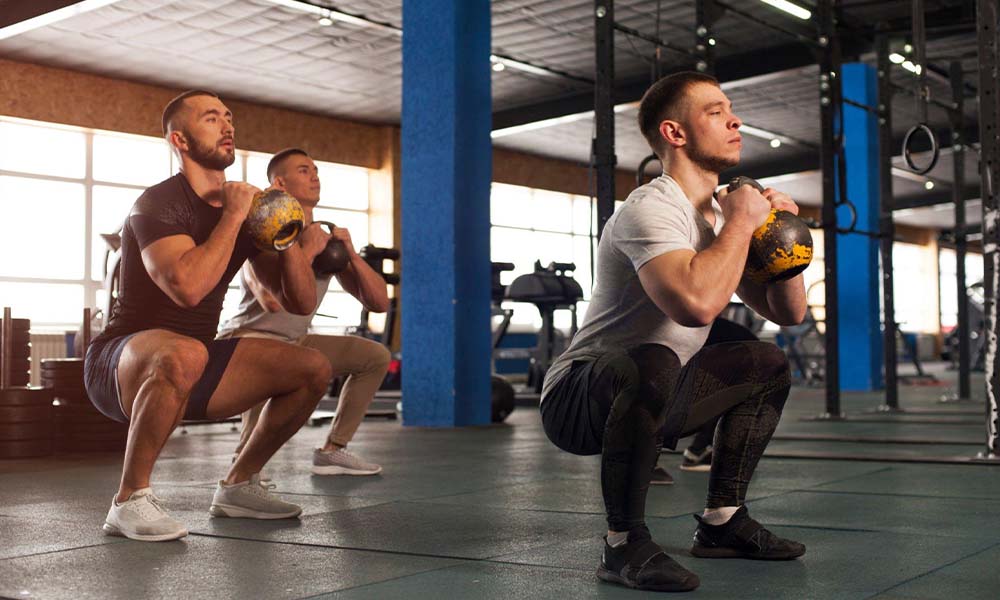When it comes to lower body workouts, squats are often hailed as the king of exercises. Not only are they effective in building strength and muscle, but they also offer a wide range of benefits for the entire lower body. From targeting the glutes to strengthening the hamstrings, squats provide a comprehensive workout that can transform your lower body and improve overall fitness.
Table of Contents
ToggleUnderstanding the lower body muscles worked during squats

Before diving into the benefits of squats, it’s important to understand the muscles that are targeted during this exercise. Squats primarily work the glutes, quadriceps, and hamstrings, but they also engage the core, calves, and lower back. This full-body engagement is what makes squats such a powerful exercise for overall lower body strength and development.
The importance of including squats in your workout routine
Now that we have a better understanding of the muscles worked during squats, let’s explore why it is crucial to include this exercise in your workout routine. Squats are a compound movement, meaning they involve multiple joints and muscle groups working together. This not only increases the efficiency of the exercise but also promotes functional strength and stability.
Including squats in your routine can help improve your performance in other exercises and everyday activities. Whether you’re an athlete looking to enhance your sports performance or simply want to increase your overall lower body strength, squats are a must-have in your workout arsenal.
How squats target the glutes and hamstrings
One of the primary benefits of squats is their ability to target the glutes and hamstrings. While many people associate squats with building the quadriceps, the glutes and hamstrings also play a significant role in the movement.
During a squat, the glutes are activated as you lower your body down and push back up. This activation helps to strengthen and shape the glute muscles, resulting in a firmer and more lifted rear end. Additionally, squats also engage the hamstrings as they work to stabilize the movement and assist in the hip extension.
Benefits of squats for glute development

If you’re looking to sculpt and strengthen your glutes, squats are the exercise for you. Squats target the gluteus maximus, the largest muscle in the glute complex, which is responsible for hip extension and external rotation. By consistently incorporating squats into your routine, you can expect to see improvements in your glute strength, shape, and overall definition.
Not only do strong glutes enhance your physique, but they also play a crucial role in functional movements such as walking, running, and jumping. Strong glutes can help improve athletic performance and reduce the risk of injuries, making squats a valuable exercise for individuals of all fitness levels.
Benefits of squats for hamstring strength
In addition to targeting the glutes, squats also provide numerous benefits for hamstring strength. The hamstrings, a group of muscles located at the back of the thigh, help to flex the knee and extend the hip. By engaging the hamstrings during squats, you can improve their strength, stability, and overall function.
Strong hamstrings are essential for activities that involve running, jumping, and explosive movements. They help to stabilize the knee joint and prevent injuries, particularly in sports that require quick changes in direction. Incorporating squats into your routine can help develop strong and resilient hamstrings, enhancing your athletic performance and reducing the risk of hamstring-related injuries.
Tips for proper squat form and technique
To reap the full benefits of squats and avoid injury, it is crucial to maintain proper form and technique. Here are some tips to ensure you’re performing squats correctly:
- Start with your feet shoulder-width apart, toes slightly turned out.
- Engage your core and keep your chest lifted throughout the movement.
- Initiate the squat by pushing your hips back and bending at the knees.
- Lower your body until your thighs are parallel to the ground, or slightly below if you have the flexibility.
- Keep your knees in line with your toes and avoid letting them cave inward.
- Push through your heels to return to the starting position, focusing on squeezing your glutes at the top.
- Remember to breathe throughout the movement, exhaling as you push up.
By following these tips, you can ensure proper form and maximize the effectiveness of your squats.
Variations of squats to target different muscle groups

While the traditional squat is highly effective, there are various squat variations that can target specific muscle groups and add variety to your lower body workouts. Here are a few examples:
- Sumo Squats: This variation involves taking a wider stance with your toes pointed outwards. It primarily targets the inner thighs and glutes, providing a different stimulus to the muscles.
- Bulgarian Split Squats: In this variation, one leg is elevated behind you, placing more emphasis on the front leg. It targets the quadriceps, glutes, and hamstrings while also improving balance and stability.
- Pistol Squats: Pistol squats are a challenging single-leg variation that requires significant strength and balance. They target the quadriceps, hamstrings, glutes, and calves, providing a comprehensive lower body workout.
Incorporating these variations into your routine can help target specific muscle groups and prevent plateauing in your progress.
Incorporating squats into a full lower body workout routine
To fully benefit from squats, it’s important to incorporate them into a well-rounded lower body workout routine. Here is a sample workout that incorporates squats and targets all major lower body muscle groups:
- Squats: 3 sets of 10-12 reps
- Lunges: 3 sets of 10-12 reps per leg
- Deadlifts: 3 sets of 8-10 reps
- Leg Press: 3 sets of 10-12 reps
- Glute Bridges: 3 sets of 12-15 reps
- Calf Raises: 3 sets of 15-20 reps
Remember to start with a weight that challenges you but allows you to maintain proper form. Gradually increase the weight as you become stronger and more comfortable with the exercises.
Frequently Asked Questions
What are squats, and how do they benefit the lower body?
Squats are a compound exercise that primarily targets the lower body muscles, including the glutes, hamstrings, quads, and calves. They offer various benefits such as strength gains, muscle growth, and improved lower body functionality.
Can squats help with weight loss in addition to building muscle?
Yes, squats can aid in weight loss indirectly by increasing muscle mass, which raises your resting metabolic rate. This can contribute to a higher calorie burn, helping with weight management.
Are squats safe for beginners, or should they be reserved for experienced gym-goers?
Squats can be safe for beginners when performed with proper form and technique. It’s crucial to start with bodyweight squats, focus on form, and gradually increase weight as strength improves.
Do squats only work the lower body, or do they engage other muscle groups too?
While squats primarily target the lower body, they also engage the core, lower back, and even some upper body muscles for stability and balance. They’re considered a full-body exercise.
What are some variations of squats that can add variety to a lower body workout routine?
Variations of squats include goblet squats, sumo squats, Bulgarian split squats, and pistol squats, among others. These variations can target different lower body muscles and add variety to your workout routine.
How often should I incorporate squats into my workout routine for optimal results?
The frequency of squatting depends on your fitness goals and overall workout routine. For most people, incorporating squats 2-3 times a week, with proper rest between sessions, is a good starting point.
Are there any common mistakes to avoid when performing squats to prevent injury?
Yes, some common mistakes include using improper form (e.g., letting knees cave in or rounding the back), lifting too much weight too soon, and neglecting warm-up and stretching. Avoiding these mistakes can help prevent injuries during squats.
Conclusion
In conclusion, squats are a powerful exercise that offers a wide range of benefits for the entire lower body. From targeting the glutes to strengthening the hamstrings, squats provide a full lower body workout that can transform your physique and improve overall fitness.
By consistently incorporating squats into your routine and focusing on proper form and technique, you can develop strong, functional muscles and reduce the risk of injuries. Whether your goal is to enhance athletic performance, increase lower body strength, or simply improve your overall fitness, squats are a must-have exercise.
So, don’t neglect the power of squats and start reaping the surprising benefits they have to offer for a full lower body workout.


